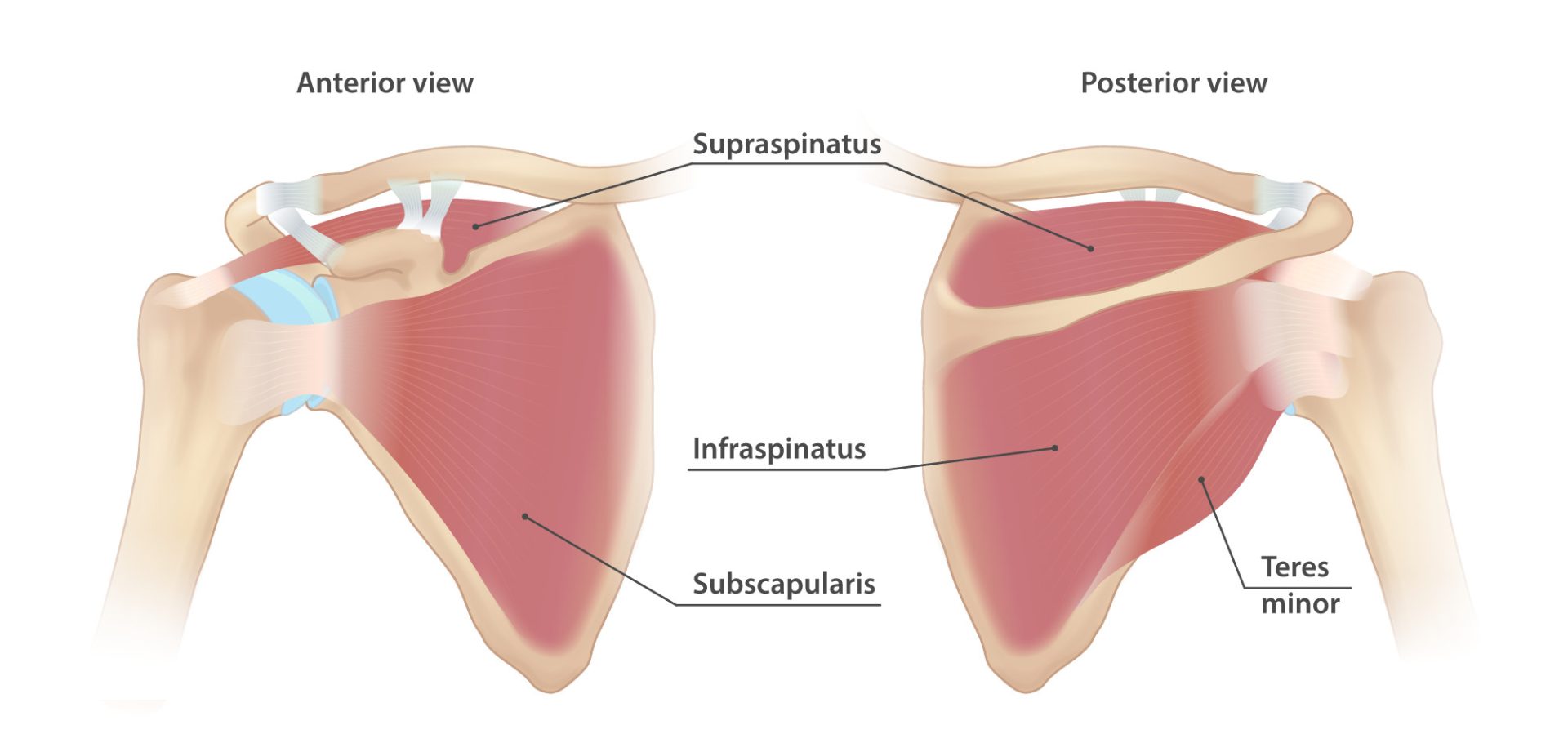Rotator cuff related shoulder pain is a common condition that affects the muscles and tendons of the rotator cuff in the shoulder. The rotator cuff is a group of muscles and tendons that surround the shoulder joint, providing stability and facilitating smooth shoulder movement. When the rotator cuff is injured or irritated, it can lead to pain, weakness, and limited range of motion in the shoulder.
Physiotherapy plays a crucial role in the management and rehabilitation of rotator cuff-related shoulder pain.
By following the 5 stages of rehab, individuals with this condition can achieve pain relief, improve shoulder function, and restore optimal strength and mobility.
- Pain and symptom management: The first stage of rehab focuses on reducing pain and managing symptoms associated with rotator cuff-related shoulder pain. Physiotherapists may employ various techniques such as manual therapy, ice or heat therapy, and gentle exercises to alleviate pain and inflammation in the shoulder. They may also provide guidance on activity modification and lifestyle changes to minimize stress on the affected area.
- Range of motion: Once pain is under control, the next stage involves restoring and improving the range of motion in the shoulder joint. Physiotherapy exercises may include gentle stretching techniques to increase flexibility and mobility in the shoulder muscles and the surrounding structures. Passive and active range of motion exercises help to restore the full range of motion in the shoulder joint and promote fluid movement.
- Motor control: Stage 3 of rehab focuses on enhancing neuromuscular control and stability around the shoulder joint. Range Physiotherapists design exercises that target the rotator cuff muscles and the scapular stabilizers to improve strength, control, and coordination. These exercises aim to improve the dynamic stability of the shoulder, ensuring proper alignment and movement of the joint during functional activities.
- Strengthening: In stage 4, the emphasis is on developing a balanced strengthening program for the upper limb, with a focus on the muscles surrounding the shoulder joint. Physiotherapy exercises include resistance training using bands, weights, or bodyweight to progressively load the shoulder and arm muscles. Strengthening these muscles helps to improve stability, reduce stress on the injured tissues, and restore optimal shoulder function.
- Maintenance: The final stage of rehab focuses on maintaining the gains achieved in the previous stages and preventing the recurrence of symptoms. Individuals are encouraged to continue with a tailored exercise program that includes a combination of range of motion exercises, strengthening exercises, and functional movements. Range Physiotherapists will provide guidance on proper movement patterns, posture, and activity modifications to prevent overloading the shoulder and to maintain shoulder health in the long term.
Physiotherapy management also includes an in depth assessment to determine any underlying cause or reason why rotator cuff related shoulder pain has developed, along with advice on lifting techniques, ergonomics, and lifestyle modifications to prevent re-injury and to promote shoulder health. It’s important to note that the management of rotator cuff-related shoulder pain should be individualized, and treatment approaches may vary depending on the specific needs and goals of each individual.
For more information regarding rotator cuff related shoulder pain please visit:


